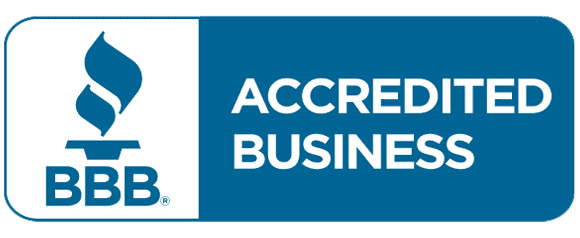What is the anchoring technique? It is when a person uses a simple piece of information when making decisions, without effort or even awareness. We naturally connect external stimuli with experiences from our past, and when we create this association, it can trigger decisions in the future. An example of a simple anchor is the smell of fresh popcorn at a carnival. The smell can remind us of something from the past like our going to the carnival as a child, or maybe of a first date which happened to be at a carnival. The association of the smell of popcorn doesn’t have to only occur at the carnival. It can happen in a movie theater that sells popcorn, and with those associations, the smell of popcorn can make us feel good and remind us of a special memory. Because of this association to the smell of popcorn, we are much more likely to purchase popcorn.
This associative behavior was first identified by an American doctor, Dr. Bill Twitmeyer, and later became well known through the work of Dr. Ivan Pavlov, in the late 1800s, who developed the ‘conditioning’ technique, which created a link between the hearing of a bell and salivation in dogs. Pavlov offered his dogs food and would simultaneously ring a bell. After doing this for a while, the result was that whenever he would ring the bell, even if no food was present, the dog would salivate. This is referred to as conditioning to a stimulus, which clearly leads to a response, and animal training in general is based on this technique.
In the late 1970s, nearly a century after Pavlov’s work with his dogs, Richard Bandler and John Grinder noticed that humans behave the same way. Pavlov’s theories assisted them in the development of neuro linguistic programming, or NLP. After some years this type of conditioned response started being applied in sales techniques.
According to multiple studies in NLP, there are five important factors in successful anchoring, and these are: 1) The intensity of the experience; Anchors that are associated with intense emotions and states of mind, like genuine happiness, an intrinsic motivation, a great level of comfort and well-being, work much better than association with medium or low-level emotions. 2) The timing of the anchor: An anchor used at the wrong time can be perceived as rude or in bad faith. As an example, if a salesperson uses an anchor as a psychological trigger with a potential client before the client is receptive, the salesperson may lose the sale. If the salesperson applies the anchoring technique with skill and at the right time, they are more likely to make the sale. 3) The uniqueness of the stimulus: This goes hand in hand with how well you listen and how fast you identify details about your potential clients. Using common stimuli like opening a door or shaking a hand may not be as effective as purposefully unique anchors that are meaningful to a specific client. 4) Replication of the stimulus; To ensure that the specific anchor stimulates the clients’ neurological processes, salespeople need to repeat the stimulus in a precise manner every time we practice it. As an example, pushing our glasses back on the nose could be the anchor for a client and the gesture should be done at a certain frequency and for a certain duration that is almost the same every time. This action will subconsciously trigger your client to buy. 5)Anchor use frequency; This means that the more we do it the better we get at it. To strengthen an anchor, it should be used multiple times, a process that’s known as stacking.
There are three anchoring techniques that have been proven successful when used on oneself, the first being the smell. The smell anchoring technique was created by Jordan Belfort, the man who is also known as the “Wolf of Wall Street”, who used a technique like Pavlov’s dog experiment, on himself but focused on creating high emotional states such as great confidence levels to use in sales situations. Every time Belfort closes a deal and feels the rush of success, he pulls out his non-medicated, all-natural nasal inhaler and takes a big inhalation, anchoring in the peak of a highly positive emotional state. He does the same whenever he needs an extra boost of confidence at the beginning of the day or before he heads in with a client.
The second technique he uses is the focus anchoring technique. For this anchor he uses touch, by taking a specific finger from his left hand to press into the middle of his right palm. This type of anchoring works very well when you are working on a serious project, those times when you are in a state of extreme focus. When you find yourself in a state of extreme focus, practice this anchoring technique, time after time. Perhaps you could scratch your chin or tap your finger on the table. Pick your action and practice it repeatedly when making your decisions or focusing on a sale. Once you have incorporated your anchor into your processes, if you want to see that it is truly working, choose a moment when you are out of focus and you’re trying to regain your focus. Apply your touch technique, and according to Belfort your focus will be restored.
The third anchoring technique Belfort used was to help him sleep, but it can be used in so many different environments. In this technique, the sense of smell is used again. The point of this technique is to quiet the mind and help one go to sleep, using a specific smell as an anchor to reinforce the association between going to sleep and this particular scent. Any gesture, scent or any noise that brings on relaxation will have the same effect. If possible, he recommends using this technique often and replicate the experience as best as possible. Once you feel that you’ve practiced enough, on those nights when you are not able to sleep this smell (or anchor of your choice) may help you feel tired so you can get a good night’s rest. A very popular sleep aid is to use a sound machine in the background which works as an anchor for millions of people who have problems falling asleep.
In all these examples, Belford has associated a positive emotion of a high importance to him with stimuli that come from external sources, like a sound, touch, or smell. The idea is that whenever we experience an intense emotional state it is almost certain that our mind will link something else in our environment to that feeling. Think about what happens when we look at an old photo album or listen to old music. We can get carried down memory lane, feeling good or bad in the present, depending on the specific memory we experienced.
Does a cologne or perfume have a certain effect on you? Perhaps it triggers a memory of some special time or a certain person? These kinds of associated sensations are anchors and their true power lies not only in being able to relive emotions from the past, but when we set them up intentionally, when we understand that someone is experiencing a strong emotion or mindset, they will likely link anything unique in their environment to that experience. Not only does this work when we are experiencing something real, tangible in the moment, but it also works when we are reliving something in our head if the memory is intense enough. There are many things we use as Anchors: A certain location, like the restaurant where you went on a first date or a certain smell, like grandma cooking your favorite meal. A certain sound, like rain pouring on asphalt, can remind someone of a favorite summer vacation. The feeling of comfort you get wearing an old sweater may be as much related to the things you’ve experienced in that sweater as it is to the sweater itself. Now that we know that we can use this anchor technique on ourselves through neuro linguistic programming, let’s see how it can be used on others, pertinent to the sales process.
Let’s do a little experiment; Try to imagine a conversation you have with a friend who just purchased a new car and is very happy with their purchase. Pretend you are talking to your friend, let’s call him George, from whom you will ask a small favor later. Start by asking him what sort of car he bought. Pay attention to how his eyes light up and how the tone of his voice changes as he talks about his new car. Perhaps he tells you he bought a Tesla. Ask him: “Was buying that car a good decision?” More than likely, he will say yes and go on to tell you why buying the car was a great decision and how happy he is about it. While he does that, focus on the very strong, positive response from George and anchor it to a unique sound or movement you make, perhaps pushing your glasses up higher on your nose, or touching your chin, whatever seems natural, but make sure to perform that gesture every time he gets super excited regarding his new car. Do this several times as you ask for more details, as the more questions and more positive answers you get will amplify the feeling and help the process. Then, change the subject and talk about something with no emotional content. Later, when it comes time to ask George for the favor, repeat the exact same movement, the anchor, pushing your glasses up on your nose, or touching your chin, whatever your choice of gesture was. You will notice that George will feel good without really knowing why. This will greatly assist you in getting that favor.
Think about it: How useful is it to be able to control the emotional state of your clients? With the Anchoring technique, you can at least attempt to do that. It takes practice and time, but the positive results from using anchoring techniques have been well documented for a long time. When used correctly, the Anchoring technique works.
Let’s review how to do this: First, during your conversation with your potential customer, uncover what the prospect wants or needs, repeating back to them those wants or needs in exactly the way the prospective clients expressed them to you. This practice creates an unconscious connection between you and your prospect because it makes them feel heard and understood. Using active listening skills and confirming your understanding (repeating back to them what you heard) helps your prospect feel valued and understood. This method is the classic subliminal persuasion technique.
During face to face or phone conversations, many experienced salespeople can also anchor their potential clients to a feeling by simply using their tone of voice alone or together with a gesture or a posture choice. Imagine you are an experienced coach with great numbers of clients that you’ve helped. You participate in weekly networking events, meeting a large number of potential clients. Imagine that at the networking meetings you can exchange business cards, and make connections, and now it’s time to have that one-on-one, face to face talk by inviting them to your office. Now you are sitting in your desk chair opposite of your client, asking them about their week. You are listening purposefully, and when they say they have had a good week so far, imagine yourself talking in a happy tone and place your left hand on a certain spot on your desk. Conversely, if you have a potential client that had a lousy week, imagine yourself talking in a different tone, and placing your right arm on the side of the chair you’re sitting in. After the casual talk has passed, and you are changing the conversation to business, follow this strategy: when the client brings up your competition, how they’ve tried different coaches and different products and programs before and it never worked for them, remember that tone of voice that you used when they were talking about their bad week and remember the way you sat with your right arm on the side of your chair. Replay that and go back to that position and that voice as often as it is needed, for as long as they talk about something that you want them to associate with a negative emotion in your anchors as well. When the time comes to talk about what you have to offer, your programs and packages, use the happy voice you’ve used when they were talking about having a good week and put the left hand on the appropriate spot on the desk. Repeat that as necessary and you will see that the results are impressive.
Here’s a great example of how anchoring works; Every night, Johnny Carson, the host of The Tonight Show for almost 30 years before John Leno took over in 1992, stood on a small star on the stage that marked exactly where he was supposed to be. It was the best spot for all the camera angles, for connecting with the audience and being able to control the show to his liking. The main thing that Johnny did from that specific location was to make people laugh. He didn’t walk around like other hosts or comedians do, and many would say that often he didn’t even have to talk because people would just laugh at him standing on that star. Why do you think that is? Experts agree that it is because Johnny Carson created a special anchoring effect for the audience, both in person and in front of the cameras, linking having fun and laughing in people’s minds while he was standing on that star. When we look at the fact that he was the host of the TV show for 30 years, that shows his success and it also shows that the anchor technique works.
Price points, as in numbers, can also be used as an anchor. Have you heard of the Manufacturer Suggested Retail Price or MSRP, as the number that consumers are going to check first when looking to sell or buy a car? For many years the only way we could purchase a new vehicle was to go to the dealership and have to deal face to face with a salesperson who would likely drag out the negotiation over many hours. Today things are different, because today we have technology that will allow us to sign contracts on our phone and because of these changes in the way cars are bought and sold, the process is supposed to move faster. What you will observe if you visit a dealership today, just like in the past you still see big price stickers on car windows that show the MSRP and you wonder; “if I have access to find out the price of this vehicle at the click of a button, what’s the point of still listing the prices on the car windows?”
Most car buyers today understand that the number on the sticker is not what the dealership paid for that car, and also know the MSRP is an artificially inflated number. Even though car buying is easier, and consumers are savvier, experiments still show that even a randomly generated price has a direct influence on what the client is willing to pay, even when they know logically that that price may have been randomly generated. This is called the price anchoring effect, and it’s explained by social psychologists that humans have the tendency to use the first available piece of information to get to a decision. That initial information anchors our brains with a mental shortcut to the decision-making process and as is in this example, establishes in our mind that the price in the window of a car is a reasonable price for that specific car.
Research conducted at the Massachusetts Institute of technology by Drazen Prelec and Dan Arieli, who wanted to see how influenced we are as consumers, by an initial anchor price, even if we know that that price is completely disconnected from the real value of that object that we are considering buying. In this experiment common objects were used: a bottle of wine, a ball and a textbook, that each student had to bid on, similar to that show called The Price is Right, where participants are supposed to guess the price of a certain item in order to win something. But before the bidding started, the students were told to write on a piece of paper in front of them the last two digits of their own Social Security number. The results were quite interesting because the students with the last two digits of their social security numbers between 80 to 99 were willing to offer a significantly higher amount for those same items, when compared with the students whose numbers were ending in 00-19. On average, the students with higher numbers bid $26 for a ball, while those with lower numbers paid an average of $9 for the same ball. This illustrated that even when they knew that the last two digits of their social security number were unrelated to the value of the object, their subconscious mind played an important role in placing their bid, which they could not overcome consciously.
These examples should give you a clear idea on how to use the Anchoring method. Although we don’t suggest that your prices should be inflated to manipulate your clients, but for education and success purposes, it’s important for you to understand that the anchoring technique does influence decision making in consumers, and how we choose our anchors and how we use them can influence an individual’s buying decisions. In sales situations, one can take advantage of the anchoring effect to set prices for products and services. However, setting a price too high might stop a potential customer from making a purchase. Also, if the price is too high a healthy market would balance itself out, and your business may not thrive until you adjust. So be thoughtful about how you use the anchoring techniques in pricing. A great price illustration is, when a company advertises a promotion or a sale of a product that used to be priced higher, but now, due to the special occasion the item is offered at a lower price, the original higher price serves as the anchor, making the new sales price seem like a far better deal.
In addition to the use of your senses, location and price, an experience can be an anchor as well. When you walk into a store, or a restaurant where you feel a positive atmosphere, you are treated with respect, you are offered personalized attention, this in turn makes you feel good, and an anchor is created by the experience itself. This is one of the methods that cruise lines are using to make travelers loyal to their brand. Carnival cruises are known as the fun, party cruise line. Because of the personal attention, entertainment, good food and all other benefits received when going on a Carnival cruise, travelers want to do it again and again. Many people are very loyal to their cruising company, refusing to switch to another.
The emotions connected to owning something is another way to anchor. Purchasing something as small as a cup of coffee from Starbucks with your name written on it, to purchasing a home, or branding your business, anchors the item to you as an individual. When you see your name on the cup of coffee from Starbucks, your name on the mortgage documents or your brand identifier, you anchor yourself to the experience of owning that item.
So, add different anchoring methods to your selling techniques and watch your business grow.
Author: Sanda Kruger
Sanda is an entrepreneur, real estate investor, health coach and professional dancer. Sanda is an entrepreneur with more than 20-year experience in business development and project management in the fields of life, health and fitness coaching. She is also a real estate investor and a banker, who learned outstanding adapted business strategies, sales and marketing techniques, communication, and goal setting skills, hands-on, through life and work experiences. She is a certified fitness professional and is the creator of two original fitness programs, called BellyCore® Fitness and AquaCor®.








